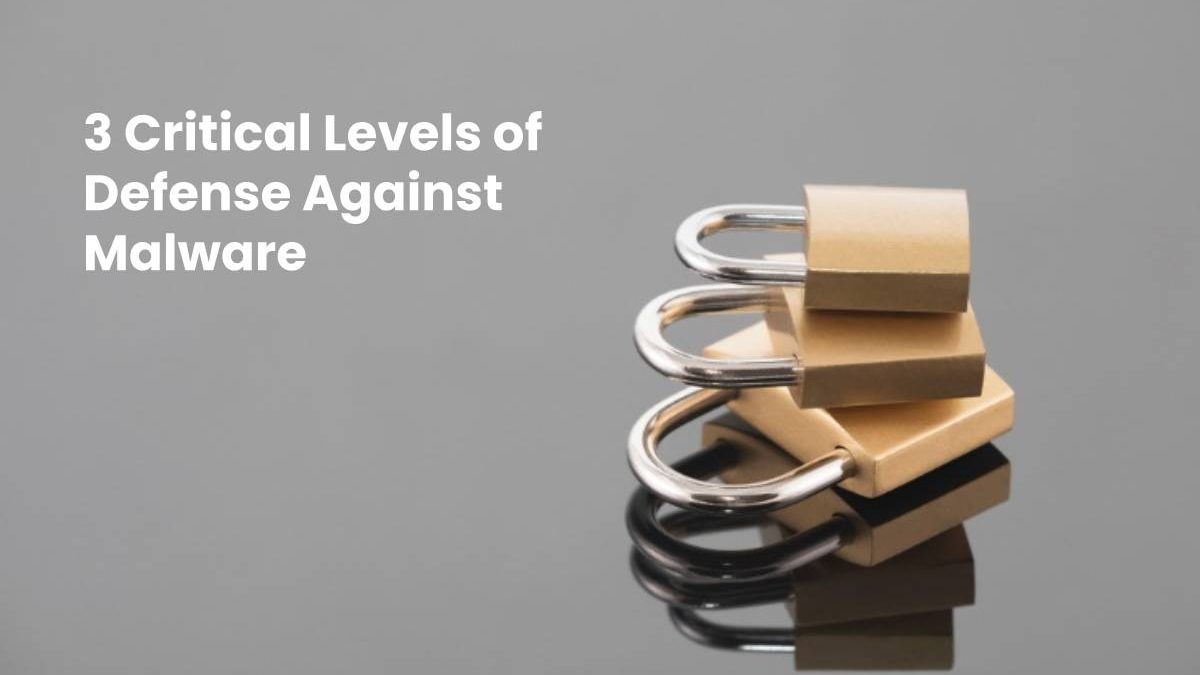Defense Against Malware
There is malware threatening your device right now. In fact, the forces of cybercrime never stop attempting to infiltrate your machines and get hold of your data; billions of instances of malware are constantly floating around the web, striving to find a way onto your device.
Fortunately, malware attacks can continue to be unsuccessful — if you understand and enact the three levels of malware defense: prevention, detection and remediation.
Table of Contents
#1. Prevention
It doesn’t matter whether you are talking about physical or cyber threats — your first line of defense is always avoiding an incident entirely.
Prevention is perhaps the most important strategy for staying safe from every form of cyber attack, especially malware, for which home users are most at risk.
To prevent threats from infecting, spreading and stealing your data, you need to install security controls on your devices and networks. Here are five prevention tools you almost certainly need:
Email security
Roughly 4 percent of all emails contain malware — which is a greater number than you might initially suspect. An email security tool is adept at scanning incoming messages and automatically removing those with suspect or corrupt files.
You can find email security tools bundled with internet security packages, for more comprehensive browser protection.
Encryption
Hackers won’t steal what they can’t understand. Encryption is a process that translates all your data into a code that can only be cracked with a specific key.
You can purchase encryption software or services, which don’t interfere with your use of your devices but will ensure that if a hacker finds a way onto your device, they won’t find anything worthwhile.
Cyber hygiene
Though not a plug-and-play defense solution, cyber hygiene is a practice that is bound to keep your devices and data safer. Essentially, good cyber hygiene helps you navigate the web while avoiding dangerous websites and content.
If you aren’t confident in your ability to avoid threats online, it is beneficial to enroll in a cyber hygiene course, either through an online MOOC or else through your local community college.
#2. Detection
Every so often, a type of cyber attack emerges that is capable of circumventing even the most thorough preventative measures. When this happens, you need tools on your devices capable of detecting the threat and thwarting it from sinking deeper into your data. At the very least, you should have detection tools that warn you of suspicious activity on your systems. Some essential home products include:
Network monitoring
These days, your computer isn’t the only device connected to your home network. Any device that connects to the internet can be infiltrated and used to attack more valuable devices, so you need  to have visuals across your network.
to have visuals across your network.
Network monitoring tools aren’t just for enterprise; you should invest in one that gives you insight into your smart home tech, your router and other devices you rarely check.
Antivirus software
The firewall built into your devices’ firmware isn’t enough to keep you safe. Antivirus tools are constantly updating with new ways to identify and remove threats from your device. The most rudimentary antivirus programs are signature-based, meaning they can only find known malware, but you should find a heuristic- or even AI-based tool, which can recognize unfamiliar threats.
#3. Remediation
Though unlikely, it is possible that both prevention and detection tools will fail to stop a cyber threat.
When that occurs, your goal isn’t merely to remove any malware on your device or network; it is to ensure that your system returns to a fully trustworthy state — otherwise, your device could remain vulnerable to a subsequent attack. Here are a few tools to help you recover from malware attack faster.
Malware removal
Some antivirus software comes with malware removal tools, but some require separate programs, especially for more advanced attacks. Your first step during an attack should be downloading a trustworthy virus remover to eradicate the threat.
Automatic backup
System backups can be lifesavers when you are hit by malware like ransomware or wipers, which virtually erase all your data.
However, you aren’t likely to remember to backup your devices manually; instead, you should schedule automatic backups to a trusted cloud service. These backups tend to occur outside of hours when you use your devices, so it doesn’t interfere with processing.
Malware isn’t going away anytime soon, so giving yourself three layers of protection against damage from malware attack is a smart way to stay safe while connecting to the internet.

